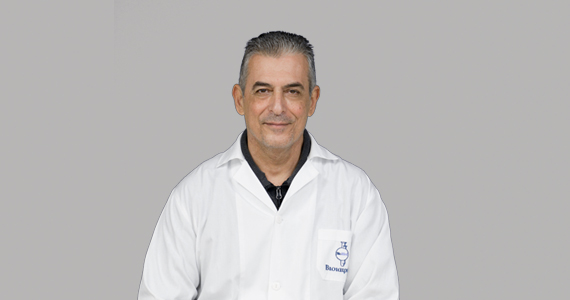
- A quick response by the personal doctor may act against the disease’s development and save lives.
by Dr. Ιlias Βoutis
Sexually transmitted diseases (STDs) are a major public health issue in many countries, as a considerable proportion of cases are asymptomatic. STDs are transmitted primarily through sexual intercourse, and they are caused by either microorganisms, such as Chlamydia, Mycoplasma, Treponema pallidum (syphilis), N. gonorrhea, and gonococcal urethritis, or viruses, such as herpes simplex virus, hepatitis B and C, HIV (AIDS), and HPV. In this case, we will talk about syphilis – one of the most common diseases worldwide.Treponema pallidum is a spirochaete bacterium with various subspecies that cause the diseases syphilis, bejel (also known as endemic syphilis), and yaws, and it is transmitted mainly through sexual intercourse. It can also be transmitted to the fetus from its mother, through the placenta.
Clinical image – Symptoms
n the primary stage of syphilis, an ulcer develops in the genitals or perianal or rectal sites, while it can rarely occur in extragenital sites. It begins with a small, round sore called a chancre. A chancre is painless, but it is highly infectious. The sore remains for 2 to 6 weeks, while the lymph nodes start swelling. Syphilis is transmitted by direct contact with the sore.
econdary syphilis occurs 6 to 8 weeks after the primary stage. There may be general symptoms of an infection, such as weakness, fever, headache, and sore throat. An extensive, non-pruritic maculopapular rash and often generalized lymphadenopathy occurs.Some patients develop ulcers in their mouth. The patient during the primary and secondary stages is infectious.
In 1/3 of untreated patients, the body’s immune response appears to neutralize the infection, while in the rest cases, the patients enter the latent form in which the secondary syphilis has gradually subsided, the patient shows clinical improvement, but continues to have a syphilitic infection .Some patients may have latent syphilis for 3 – 30 years before tertiary syphilis manifests, while others may never develop any of the late complications of the infection. Tertiary and quaternary syphilis are the late stages of syphilis.
In tertiary syphilis, the first complications occur 3-30 years after the initial infection and usually involve the skin and subcutaneous tissues, upper respiratory mucosa, bones, and joints causing neuropathic arthropathy (Charcot joints).
Quaternary syphilis can occur 5 – 30 years after the initial infection, with serious cardiovascular or Central Nervous System (CNS) complications such as mental illness and paralysis.
Laboratory diagnosis
The laboratory diagnosis of syphilis is mainly based on serological tests, such as VDRL (Veneral Disease Research Laboratory), RPR (Rapid Plasma Reagin), TPHA (Hemagglutination test with T. Pallidum) and FTA – ABS (Fluorescent Treponemal antibodies – absorbed test) – an indirect immunofluorescence test. FTA – ABS can detect IgG or IgM antibodies. IgM antibodies are detected in cases of recent infection, while IgG antibodies appear later and persist even in cases that have been cured.
VDRL and RPR are screening tests. Both tests have high false positive rates. For this reason, a confirmatory test such as TPHA and FTA–ABS should be followed. These tests determine the specific antibodies against T. pallidum. The FTA-ABS test in particular, is the most sensitive test used to diagnose syphilis. This test will give positive results for life, even if the patient receives appropriate treatment.
Treatment
Patients should consult their attending physician for treatment immediately after diagnosis. Syphilis is effectively treated with antibiotics. However, follow-ups should be done at 3, 6, 12, and 24 months after diagnosis to assess whether the infection has been treated. After 24 months, the patient is recommended to be examined every year, as it is possible to be re-infected with the microorganism. It is necessary to avoid sexual contact until two consecutive serological tests show that the infection has been cured.
Prevention
The lack of information about STDs results in a negative impact in the way of ensuring public health in our country. Society often has a discrimination against carriers and patients with STDs, thus making it difficult to try to detect and treat them, as preventive and diagnostic tests are avoided, for fear of social exclusion. However, everyone should be aware that counseling and monitoring both the healthy person and the patient respectively by the treating physician, is particularly important to treating STDs. The annual check of Sexually Transmitted Diseases in an ISO accredited medical laboratory is considered equally necessary, as early diagnosis with validation of results by medical microbiologists and biopathologists and, of course, immediate treatment by the attending physician can prevent the progression of the disease and save lives.
To reduce the risk of STD transmission, it is always recommended to use a latex condom with every sexual intercourse. Condoms are effective when they are used from the beginning of the sexual act, are intact, of good quality and have not been exposed to light or heat for a long time. Prevention and avoidance of STD transmission is everyone’s personal responsibility.
*Biopathologist – Microbiologist, member of Medical team of BIOIATRIKI Healthcare Group in Cyprus.









